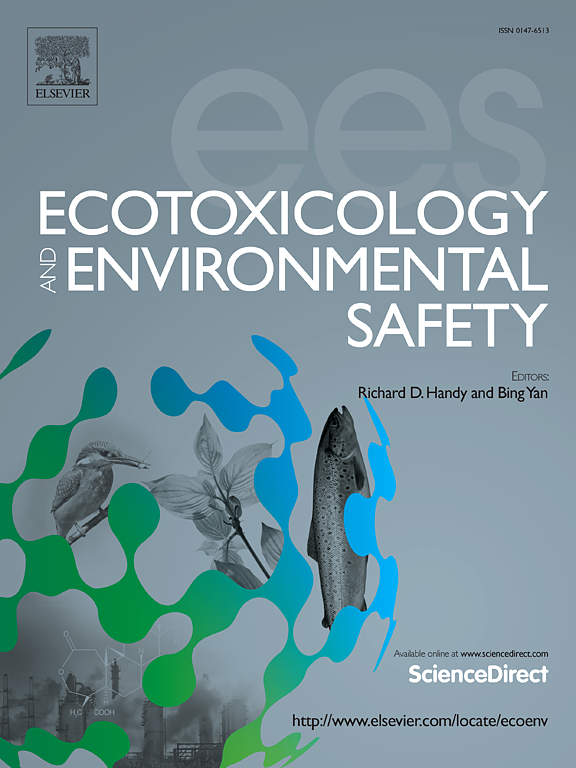The basic-region/leucine-zipper-motif 53 improves cotton’s salt tolerance by inhibiting tryptophan-arginine-lysine-tyrosine 68 expression and enhancing superoxide dismutase activity
IF 6.2
2区 环境科学与生态学
Q1 ENVIRONMENTAL SCIENCES
引用次数: 0
Abstract
Basic-region/leucine-zipper-motif (bZIP) transcription factors are key players in modulating plant response to saline stress. However, whether and how GhbZIP53 regulates salt tolerance in cotton (Gossypium hirsutum) is an enigma. Here, GhbZIP53 expression was demonstrated to be activated by NaCl, and GhbZIP53 positively regulated salt resistance by enhancing superoxide dismutase (SOD) activity. GhbZIP53 could directly interact with the promoter of the transcription factor gene tryptophan-arginine-lysine-tyrosine 68 (GhWRKY68), thereby inhibiting its expression. Additionally, GhWRKY68 notably suppressed the transcription of the Cu/Zn-SOD gene GhCSD6 and the Fe-SOD genes GhFSD2 and GhFSD3, further reducing SOD activity under salinity stress. Silencing each of GhCSD6, GhFSD2, and GhFSD3 also markedly enhanced cotton’s sensitivity to saline stress. These results suggest that the GhbZIP53-GhWRKY68-GhSODs module serves crucial roles in salt tolerance by elevating SOD activity in cotton plants.
求助全文
约1分钟内获得全文
求助全文
来源期刊
CiteScore
12.10
自引率
5.90%
发文量
1234
审稿时长
88 days
期刊介绍:
Ecotoxicology and Environmental Safety is a multi-disciplinary journal that focuses on understanding the exposure and effects of environmental contamination on organisms including human health. The scope of the journal covers three main themes. The topics within these themes, indicated below, include (but are not limited to) the following: Ecotoxicology、Environmental Chemistry、Environmental Safety etc.

 求助内容:
求助内容: 应助结果提醒方式:
应助结果提醒方式:


